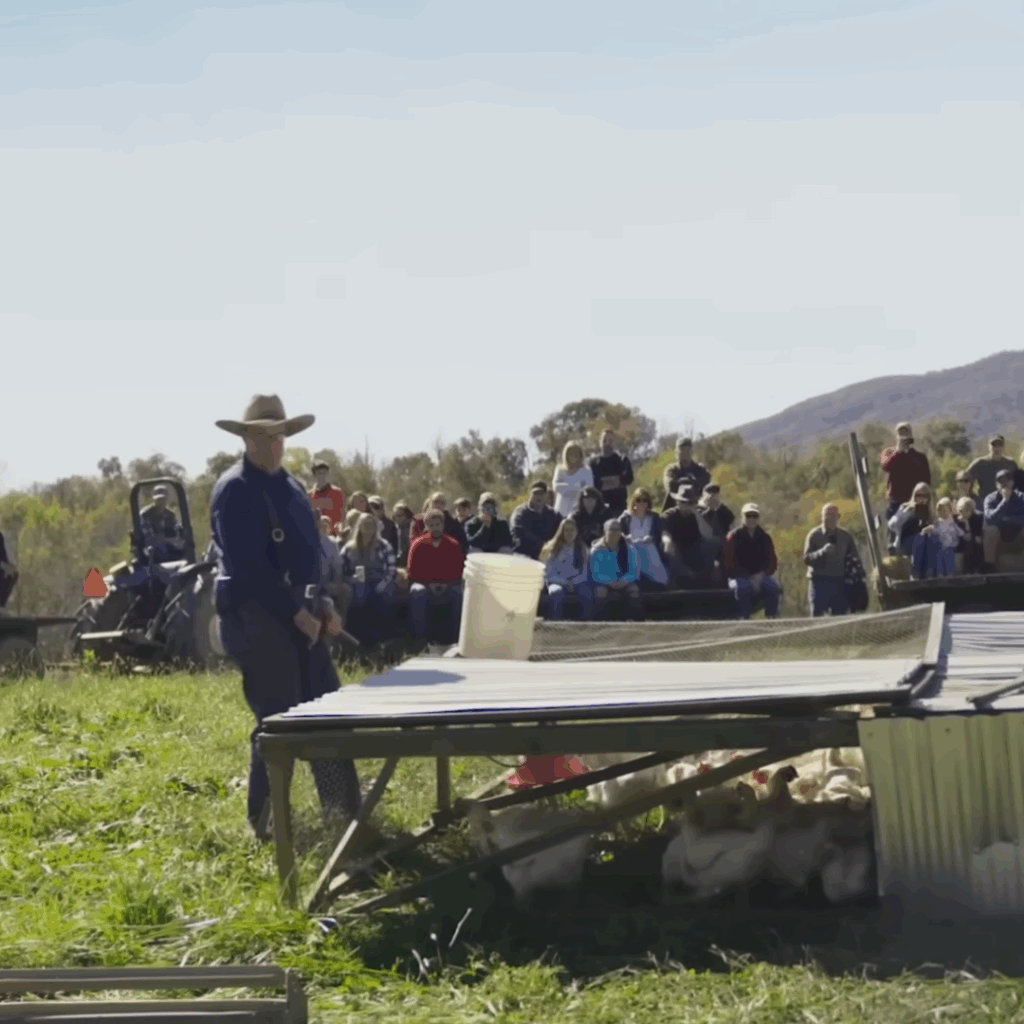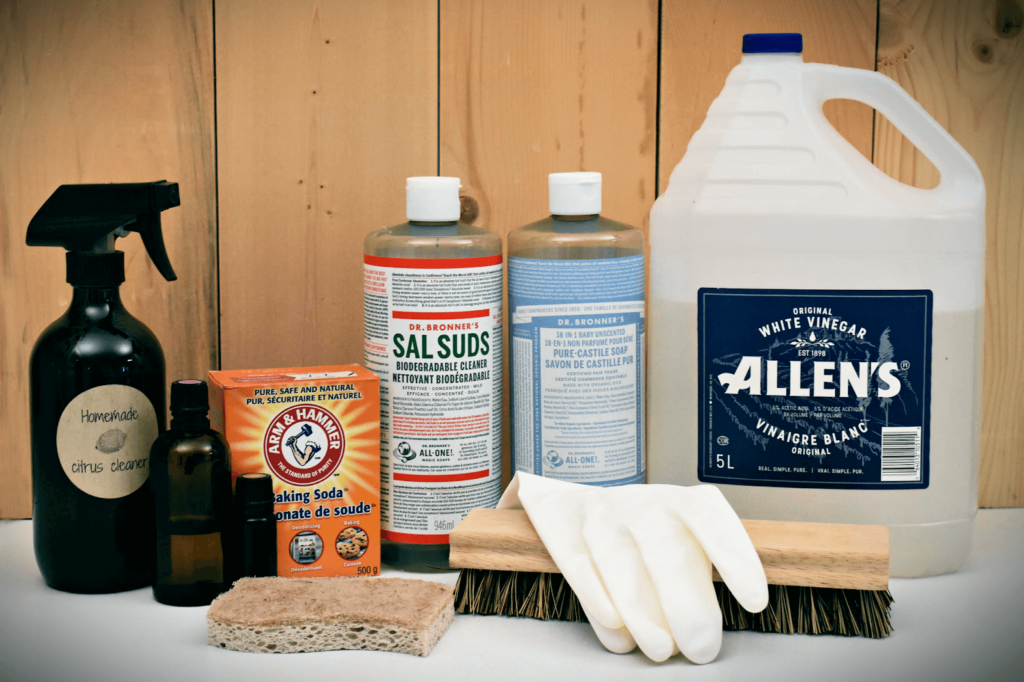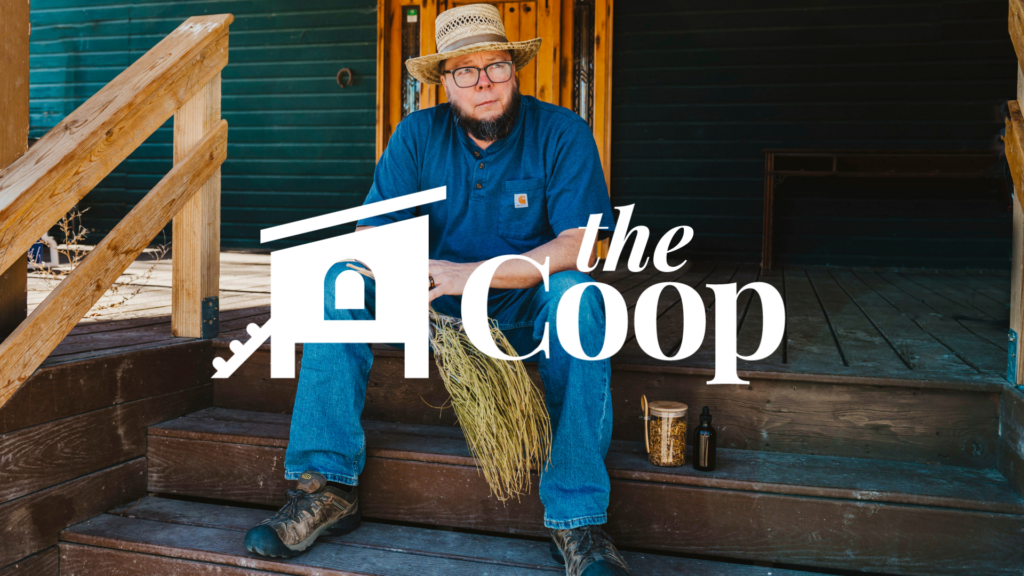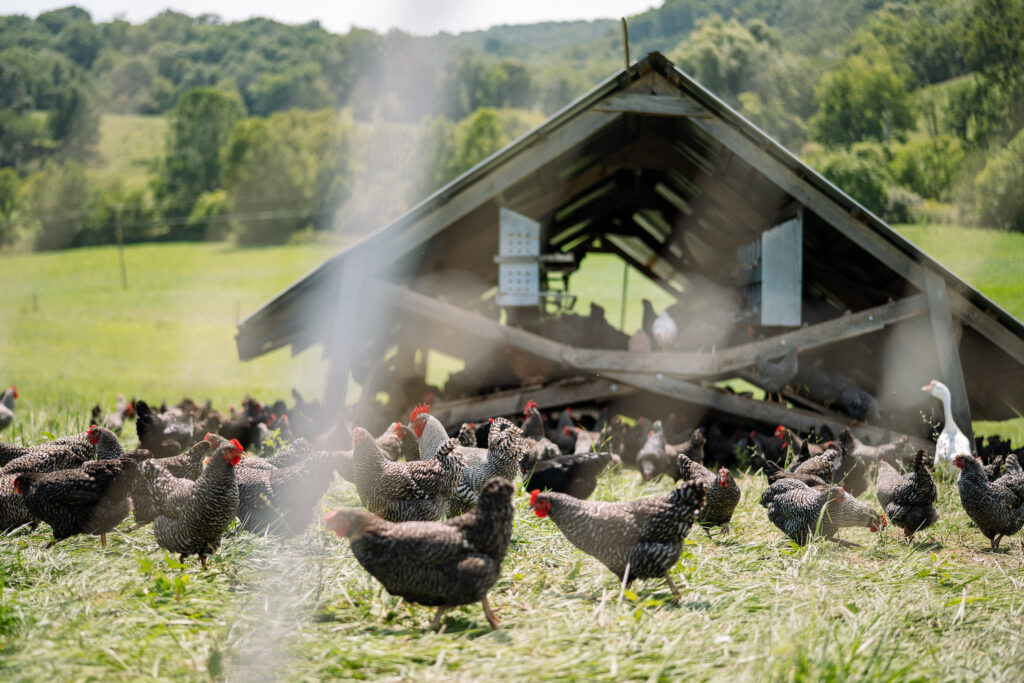Natural systems also adjust and adapt readily. A cow can eat clover, fescue, orchard grass, chicory, plantain, or poplar tree leaves depending on what’s available. A chicken can eat all sorts of things from worms to seeds to leaves. The human microbiome is designed to handle all sorts of inputs. But a plastics factory can’t suddenly substitute grass for polyurethane or seeds for formaldehyde.
As University of Missouri agricultural economics professor emeritus John Ikerd says, industrial systems are built on specialization, simplification, routinization, and mechanization. But biological systems are built on diversification, complexity, spontaneity, and dynamism. The dynamic relational attributes of natural systems build in stability, enabling them to run without a lot of interference.
Industrial systems, being linear, aren’t as adaptable or stable. An interruption creates a cascading domino effect all the way down the chain. Yes, natural systems can fail when immune systems break down, toxins overload, or some imbalance throws cycles off-kilter. But the ability to self-adjust is fundamentally biological. Wheel bearings don’t make a scab and heal like a wound on your hand.
In the spring of 2020, with store shelves empty and millions of chickens, pigs, and turkeys exterminated because industrial facilities couldn’t handle human resource shocks, thousands of small farmers saw customers desperate for food. Where was the food? It was tucked in thousands of small farm inventories, and small processing facilities kept right on working and humming while the big ones collapsed.
Suddenly the operative word in business changed from efficiency to resiliency. We’d been told by business experts for a couple of decades to optimize efficiency. The fact that the U.S. imported 20 percent of its food from cheaper sources didn’t raise any eyebrows. Social scientists wrote papers encouraging all food to be imported from cheaper places. After all, how can you justify using land to grow vegetables when it could sprout a microchip manufacturing plant instead?
Municipal water utilities in places like Las Vegas determined that a gallon of water to grow onions is worth a few cents but a gallon of water in a casino hot tub is worth $150. That people even played with these kinds of numbers and data systems is laughable when the store shelves went empty. More and more people now realize that circular chains are stronger than long-distance linear chains.

What makes Uber and Airbnb work? The feedback loop. What’s the most common customer complaint about big business? “When I try to communicate, the conversation goes only one way; nobody gets back to me; nobody answers the phone; it’s a black hole of customer no-service.” Phrases like “circle of life” capture the essence of truly vibrant systems. We signify marriage durability with a wedding ring, not a yardstick.
A kissing cousin of linear thinking is segregated thinking which is the opposite of integrated thinking. Western industrial education compartmentalizes subjects, moving students through categorized classes organized into unrelated mental boxes. This makes us see ourselves as islands rather than guilds. Our culture’s fixation on hyper-individuality creates societal vulnerability since we know more and more about less and less.
Specialists replace generalists, becoming like the blind men touching the elephant. One touches the tail and says the object is like a broom. One touches the leg and says it’s like a tree. One touches the ear and decides it’s like a fan. One touches the trunk and informs the others that no, it’s more like a hose.
Homesteaders are not immune to being splashed on by the linear, segregated thinking of our American culture. Chafing under the dependency and human density of urban existence, the temptation is to tilt too far in the other direction. “I’ll do it my way” may work for Frank Sinatra’s song, but it doesn’t work if you’re a novice trying to milk a cow or plant a tomato. Far better is seeking some counsel from somebody with experience.

A community is a fundamentally circular thing. One of the secrets of Amish communities is that every dollar that enters circulates seven times before it exits the community. When an outsider buys a pound of Amish cheese, that dollar goes to the cheese company, who then pays the employees, who spend it on horse, harness, and house. Other members of the community breed the horse, craft the harness, and build the house. The expertise and material are fundamentally locally generated and locally crafted.
This keeps the money and expertise circulating in the community. Hermit homesteaders don’t flourish. They think they’re at the end of a line or the beginning of a line rather than participants in a wonderful community circle of economy and expertise. That is why successful homesteaders may arrive at their homestead at the end of a fleeing journey, but they quickly embrace a place. You can only run away for so long; eventually you have to stop running, put down roots, and put your arms around home. Locale. Place.
Building mutual interdependence beats stubborn single-handed independence any time of day. The gifts and talents to be successful in all the areas begging for expertise don’t grow on the same pair of legs. Some of us are better at plants; some better at livestock. Some are better at fixing small engines, and others are better at schmoozing customers. The more relationships we cultivate with people who have skill sets different than ours, the broader and more eclectic our base.
Every one of us has things we don’t like to do or we’re not good at doing. We put these projects off until we’re embarrassed by our own neglect. Chances are that just up the road lives a person who jumps out of bed in the morning wanting to do that thing you don’t enjoy. And she’s good at it. Why deprive that neighbor of the opportunity to spend more time doing what she likes? Perhaps you can do something she doesn’t like to do.
This is the essence of community. I submit that if cultural dysfunction continues, the iconic 401(k) will be replaced by living proximate to people who know how to grow, fix, and build things. Would you rather have a portfolio of financial investments roller-coastering up and down or a relational portfolio of nearby folks who can grow, fix, and build?
Size matters too. When we’re in rocky waters, who wants to be in an aircraft carrier? You want to be in a speedboat, to make quick adjustments, to adapt. Wow, that sounds like the chicken that goes from worms to bread crumbs. When a Black Swan event hits, massive centralized industrial outfits are the most fragile, not the most resilient. The biggest cities become the most vulnerable to mobs, starvation, and collapse, not the little rural towns. In small towns, people know each other; they pull together. The easiest place to get lost is in a city, where anonymity is ubiquitous.

Out in the country, everyone knows your car, your truck, your dog, your cow. If you don’t show up, they come looking for you. If you don’t wave, you’re a snob. Nobody asks your politics or religion. You’re just out here pulling together in the circle of life. You’re not on the end of something; you’re in the middle of it. That sense of being inside of something rather than on the outside looking in is the gift of community.
The reason community is such a gift is because it functions like living, biological systems whose patterns are cyclical rather than linear. And with that gift comes accountability, responsibility, and affirmation of personal worth and contribution. I give you my potatoes and you fix my electric fence. We’re all in this together, and that’s a cure for fragility, instability, and insecurity.
As recently as 1945, the average distance food traveled from farm to plate was 40 miles. Today, it’s 1,500. How vulnerable do those extra 1,460 miles make our sustenance? How many unseen, unknown dependencies must function in order for that food to arrive on our plate?
This long chain of travel occurred due to cheap energy that obscured efficiency. Today, more folks realize that efficiency can only kick in after achieving resilience. After all, if you don’t first survive, all the efficiency in the world is worthless.
Over the years, I’ve relied on neighbors for many things. Whether it’s borrowing a tool or a piece of equipment or asking advice about something beyond my understanding, help is always around the corner. We don’t trade stuff for money; we help because next week the shoe might be on the other foot. Because things come around. Sounds like a circle, doesn’t it? Life isn’t about dead ends; it’s about legacy, which restarts with each generation. Turning, turning, turning.







Leave a Reply